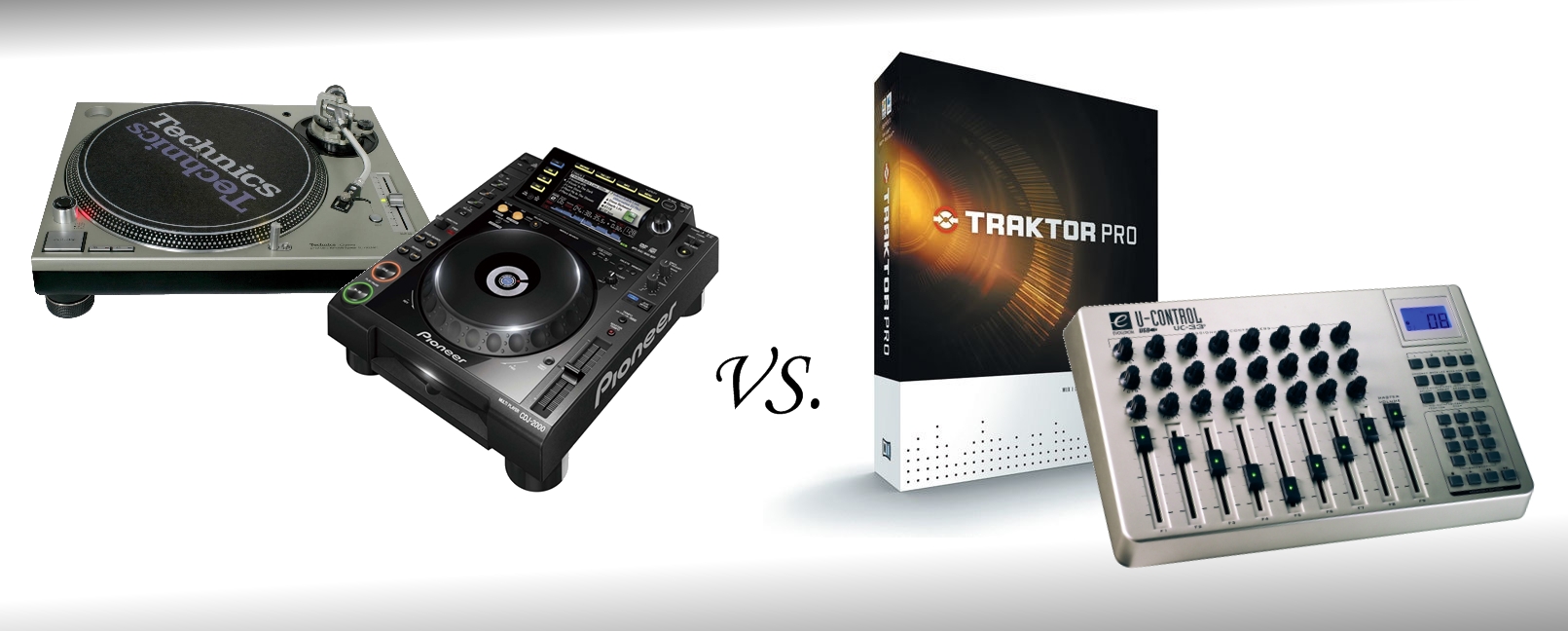
… or How to Beatmatch with Traktor and a CDJ
So here it is, the first article for Kana 2010 and what better way to start than by helping you get your groove on with those pesky CDJ’s that people just dont want to give up! Don’t they know laptops are king these days? (Just kidding…hah, enjoy your own flavour I say!)
Apologies must first be made for the serious delay in responding to the initial request for this article, lets just say it’s better late than never, what do you say?
Right, so if you read the first piece on the dynamics of digital mixing which was about beat-matching Ableton Live to any number of CDJ’s, you will have the idea; what we clearly need to do is sort out how you are going to do this if you are a Traktor user and prefer to “sync” your tracks internally.
(Note: If you use software other than Traktor and want a tutorial for it, by all means post in the comment field and I’ll track down a copy to review for you.)
EDIT: For this setup you will need to be using Traktor’s internal master clock to sync your tracks to. I.E. All tracks will have “Sync” highlighted, instead of one track being chosen as the “Master” track, with the remainder syncing to it.
To pull this off I am going to assume you understand the basics of midi-mapping in Traktor, if you don’t then don’t stress I’ll be sure to post something on the subject soon enough but leave a comment if it’s not soon enough for you… or just go read the manual like a good student!
1) First we need to choose a fader on your midi controller on which to assign your virtual pitch slider
In Traktor, open Preferences:
- Menu -> Midi Mappings
- Click “Add” then from the new pop up menu select “Master Clock”, followed by “Master Tempo”
- Now, click “Learn” and then move the slider on your midi controller which you want to be your virtual pitch slide.
- Great, thats now assigned. If you were to close the preferences you would now see the tempo clock in the top left corner moving in response to your movements on the fader.
2) Now we need to adjust the settings of the assignment so it is closer to the “feel” we are going for, restrict the range a little bit if you will.
In that same window below where you clicked “Learn” you will want to set the “Controller Configuration” to:
- Interaction Mode: Direct (this is default)
- Type of Controller: Relative Fader / Knob (need to change to this)
- Assignment: Global (this is default)
Below this you will now see some new configurations entitled “Rotary Encoder”: here you will adjust the slider marked “Rotary Sensitivity” to change the range of the fader, or the maximum/minimum BPM that you can increase/decrease to.
A good place to start is 15% which gives you a range of approximately 6.46 BPM, and will move the BPM in increments of 0.04-0.05 (this is slightly varied for some reason).
If you want a finer level of control then bring the sensitivity right down to 11% which will give you a range of 3.42 BPM which moves in increments of 0.02-0.03.
The only draw back here is if you don’t get a tight “drop” and have your initial tempo close to begin with, then you will find it very hard (read: impossible) to catchup to a beat that you don’t have the range for.
3) Final suggestion is to assign the “TAP” button to a spare key on your laptop, or a free button on your controller (of which there should be NONE if you are seriously into this)
Note: TAP is default assigned to “Ctrl+Space”; by holding Control and tapping the space bar you can “tap” the tempo of the current track. This is fine, but if you are anything like me having to hold one button whilst hitting another for a Single function should be avoided wherever possible. (Granted this is unavoidable in some situations, however, dare I say that this may be a case when its worth avoiding?)
To assign to a single key on your keyboard:
- Preferences Menu -> Keyboard Mapping
- Click “Add” then from the new pop up menu select “Master Clock”, followed by “Master Tempo Beat Tap”
- Now, click “Learn” then hit the key on your keyboard you wish to assign; unclick “Learn” once you’ve assigned so you don’t accidentally assign to something else.
- I like to use the “\” key above my “Enter” key, but choose something that works for you.
4) Putting it into practice….
- Move your new virtual Pitch Slider to the middle position (midi value 65)
- Then, ‘Tap’ your tempo along with the current playing track from the previous DJ
- Once you’ve seen the tempo reading steady out substantially you can be confident you have a fairly close BPM
- Now you need to press “Play” in-time with the current song and get ready to ride the pitch into perfect tempo harmony.
Happy mixing!
Adam
